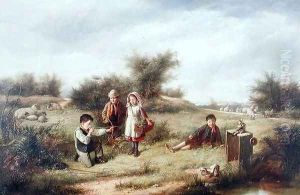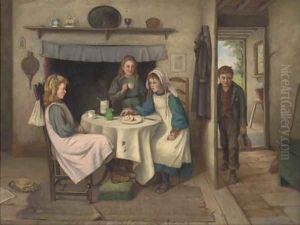Reuben Hunt Paintings
Reuben Harrison Hunt, born in 1862, was an American architect who left a significant mark on the architectural landscape of the Southern United States, especially in Chattanooga, Tennessee, where he was primarily active. Hunt's career, spanning from the late 19th century into the early 20th century, was marked by his versatility and ability to design in various popular styles of his time, including Romanesque Revival, Classical Revival, and Gothic Revival. His architectural legacy is rich, encompassing a wide range of building types such as churches, schools, commercial buildings, hospitals, and particularly grand railway stations, which were pivotal in the urban development of many American cities during this period.
Reuben Hunt's architectural education was largely based on practical experience rather than formal training, a common route for architects of his generation. Moving to Chattanooga in the 1880s, he quickly established himself as a prominent architect in the rapidly industrializing South. Hunt's designs were known for their innovation, attention to detail, and the ability to meet the functional needs of his clients while also achieving aesthetic excellence. Among his most celebrated works is the Chattanooga Choo Choo, originally the Terminal Station in Chattanooga, a testament to the grandeur of early 20th-century railway architecture and now a hotel and entertainment complex. This building, along with others designed by Hunt, is listed on the National Register of Historic Places, highlighting its historical and architectural significance.
Throughout his career, Reuben Hunt was involved in the design and construction of over a hundred buildings, many of which have been preserved and continue to serve as key landmarks in their respective communities. His contributions to the architectural field were recognized by his peers, and he was a respected member of various professional organizations. Hunt's work not only reflects the architectural trends and technological advancements of his time but also his understanding of the social and cultural implications of architecture. His buildings are celebrated for their beauty, functionality, and enduring impact on the urban and cultural landscapes of the American South.
Reuben Harrison Hunt passed away in 1937, leaving behind a legacy that continues to be studied and admired by architects, historians, and the general public. His work remains a significant part of the architectural heritage of the United States, particularly in the regions where he was most active. Through his buildings, Hunt contributed to the shaping of American urban identity in the era of rapid industrialization and growth, making him a pivotal figure in the history of American architecture.

